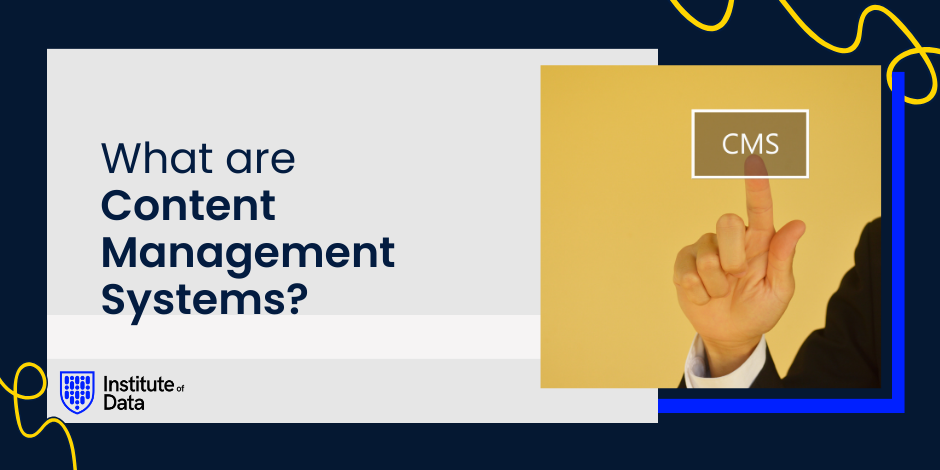What are content management systems?

Stay Informed With Our Weekly Newsletter
Receive crucial updates on the ever-evolving landscape of technology and innovation.
Content management systems (CMSs) have become indispensable tools for businesses of all sizes in managing their digital content.
The Content Management Software market is projected to reach US$22.27 billion in revenue in 2024, with the average Spend per Employee projected to hit US$6.35 in the same year.
We explore the basics of content management systems, the different types available, key features to look out for, and how to choose the right system for your business.
Understanding the basics of content management systems

The concept of managing and organizing content dates back to the early days of the Internet when websites were simple and static.
As the internet evolved and businesses started to realize the potential of having an online presence, the need for a more efficient way to manage and update content became evident.
Defining content management systems
A content management system is a software application that enables businesses to create, manage, and organize their digital content efficiently.
It provides a user-friendly interface that allows non-technical users to easily update and publish content on their websites or other digital platforms.
Content management systems have revolutionized the way businesses handle their online content. Gone are the days of relying on web developers to make even the smallest changes to a website.
With a content management system in place, businesses can control their content and make updates in real time, ensuring that their online presence is always fresh and engaging.
The importance of content management systems in today’s digital age
In the fast-paced digital marketing world, businesses must ensure that their online content remains up-to-date and relevant.
Content management systems empower businesses to control their digital assets fully, enabling them to quickly make changes, share information with their audience, and achieve their marketing objectives.
Furthermore, content management systems offer a range of additional benefits.
They allow businesses to personalize content for different target audiences, ensuring that each user receives a tailored experience.
This level of customization not only enhances user engagement but also improves conversion rates.
Moreover, content management systems often come equipped with built-in analytics tools that allow businesses to track the performance of their content.
Analyzing data, such as page views, bounce rates, and user engagement, lets businesses gain valuable insights into the effectiveness of their content strategy and make data-driven decisions to optimize their online presence.
The different types of content management systems

Now that we understand the basics of content management systems let’s explore the various types available in the market:
Web Content Management Systems
Web content management systems (WCMS) are designed to create, manage, and publish website content.
Examples include WordPress, Wix, or Squarespace, to name a few.
They provide an intuitive interface, allowing businesses to update website content easily.
WCMS also offers features such as template management, user permissions, and SEO optimization tools.
A popular WCMS is WordPress.
WordPress is an open-source platform that powers millions of websites around the world. It offers a wide range of themes and plugins, allowing users to customize their websites to suit their needs.
Its user-friendly interface allows non-technical users to manage and update their website content easily.
Enterprise Content Management Systems
Enterprise content management systems (ECMS) are tailored for large organizations that handle vast content.
ECMSs offer robust document management, collaboration tools, and version control features. They are ideal for businesses with complex content workflows and multiple stakeholders.
One notable example of an ECMS is Microsoft SharePoint.
SharePoint provides a comprehensive suite of tools for document management, team collaboration, and content sharing.
It allows organizations to create centralized repositories for all their content, making it easier to organize, search, and retrieve information.
With its advanced security features, SharePoint ensures that sensitive data remains protected.
Component Content Management Systems
Component content management systems (CCMS) are designed for businesses that create content with modular components. CCMS enables content to be reused and repurposed across multiple platforms and channels.
This enhances content consistency and improves efficiency in content creation and updating processes.
One example of a CCMS is Adobe Experience Manager. Adobe Experience Manager allows businesses to create and manage content components that can be easily assembled and reused across different digital channels.
This streamlines the content creation process and ensures consistent messaging across various touchpoints.
With its advanced analytics capabilities, Adobe Experience Manager provides insights into content performance, helping businesses optimize their content strategy.
Key features of content management systems
Now let’s explore some of the key features to look out for when considering a content management system:
Content creation and editing
A good CMS should offer a user-friendly interface for easy content creation and editing. It should provide formatting tools, media libraries, and the ability to add metadata to enhance searchability.
Workflow management
Efficient workflow management is crucial in content creation and publishing processes.
A CMS should allow businesses to define roles and permissions, track changes, and facilitate collaboration between team members.
Search and retrieval
Fast and accurate search and retrieval capabilities are essential in large-scale content management.
A CMS should have robust search functionality with filters, tags, and sorting options to enable users to find the desired content quickly.
Choosing the right content management system

When it comes to selecting the right content management system for your business, there are a few factors to consider:
Assessing your business needs
Start by evaluating your business requirements and goals.
Consider factors such as your organization’s size, the amount of content you handle, and your future scalability needs.
Evaluating system features
Research different CMS options and evaluate their features against your business requirements.
Look for a CMS that offers the necessary functionality, ease of use, and integrations with other tools your business uses.
Considering cost and scalability
Budgeting is always a consideration when selecting a CMS.
Compare the costs of different CMS, including implementation, licensing, and maintenance fees. Additionally, consider the system’s scalability to ensure it can accommodate your future growth.
Conclusion
Content management systems have revolutionized the way businesses manage their digital content.
They enable businesses to update and publish content easily, collaborate efficiently, and achieve their marketing objectives.
Are you ready to launch your career in digital marketing?
If so, we encourage you to explore the Institute of Data’s Digital Marketing & Artificial Intelligence program.
Alternatively, we invite you to book a complimentary call with a member of our team to discuss the Digital Marketing program in more detail.





